Razer Opus
The Razer Opus isn’t the first attempt from the gaming peripherals maker to branch out from its “for gamers, by gamers” brand image with general consumer products. The company recently released the Razer Hammerhead True Wireless Pro, which much like the Opus, leverages its THX-certification to put audio on the forefront rather than simply banking on its gaming credentials.
With the Razer Opus, the company is aiming for the high-end noise-cancelling headphones market that is dominated by the likes of Bose and Sony. It's surprisingly affordable for what it brings to the table: for $199 (£199, AU$330), you're getting a stylish pair of headphones that will cancel outside noise, with plenty of quality of life features that will make them appealing to people who may have never engaged with the brand. Unlike the Hammerhead True Wireless Pro, Razer has gotten the ANC just right this time around. They are comparable to the $350 Bose QC35 II headphones, even if they’re not quite as comfortable.
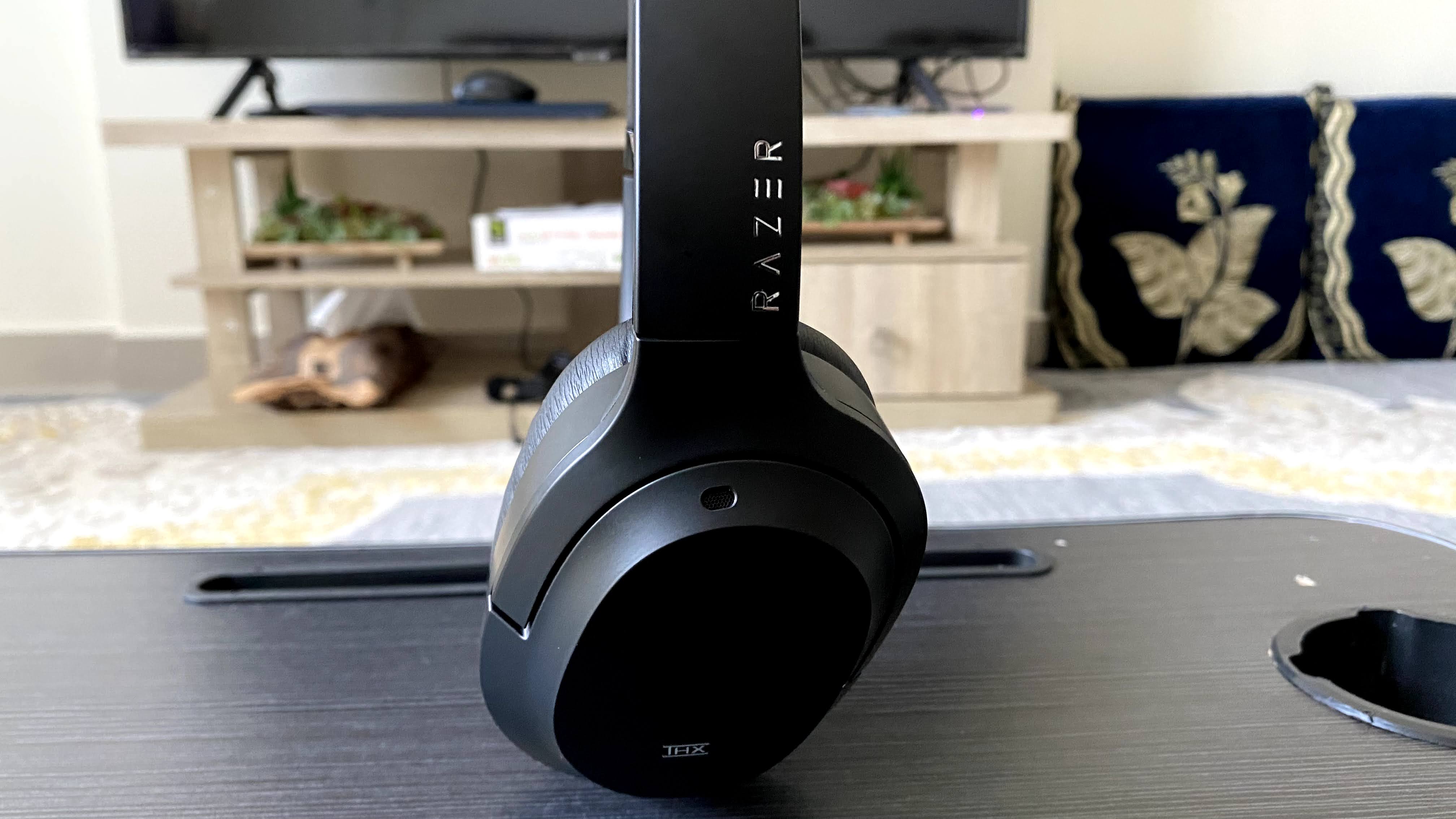
This lack of comfort may vary for some users, however. If you happen to have average-sized ears like we do, the ear cups won't quite cover them entirely, and will press down on the outside of their ears. The plush padding on the earcups work well to provide some comfort, but the strong clamp force does get a bit uncomfortable after an hour or so of use. Of course, your mileage may vary depending on your past experience with on-ear headphones, and the size of your ears.
As far as ports go, you have USB-C for charging (thank goodness), along with a 3.5mm headphone jack – which means you can use this headset with everything. Playing Animal Crossing with ANC on? Totally possible.
We received an updated model of the Razer Opus, which seemingly differs only in how the button configuration is laid out. Previously, the Opus had the buttons on the left ear cup, with separate toggles for the power and ANC functionality. In the updated model, it seems Razer has taken some of the feedback to heart and made some crucial quality of life changes. The button layout is now moved to the right side along with all the ports, and the power and ANC functionality has been combined into a single button for ease of use.
To use the ANC feature, you have to press the power button to switch between Ambient Mode, ANC Off, and ANC On. It works painlessly with a voice denoting the switch between each feature. There is also a button sandwiched between the volume buttons that can be used to summon your device’s voice assistant, play/pause tracks, and answer/reject phone calls.

Aesthetically, the headphones are way more subtle than we expected, with a monochromatic design that frankly looks amazing. There is a Razer logo on either side of the headband, but it's tasteful, and doesn't have the garish design elements that the manufacturer is known for. You'll also get a hard carrying case and all the cables you need to fully take advantage of the headset.
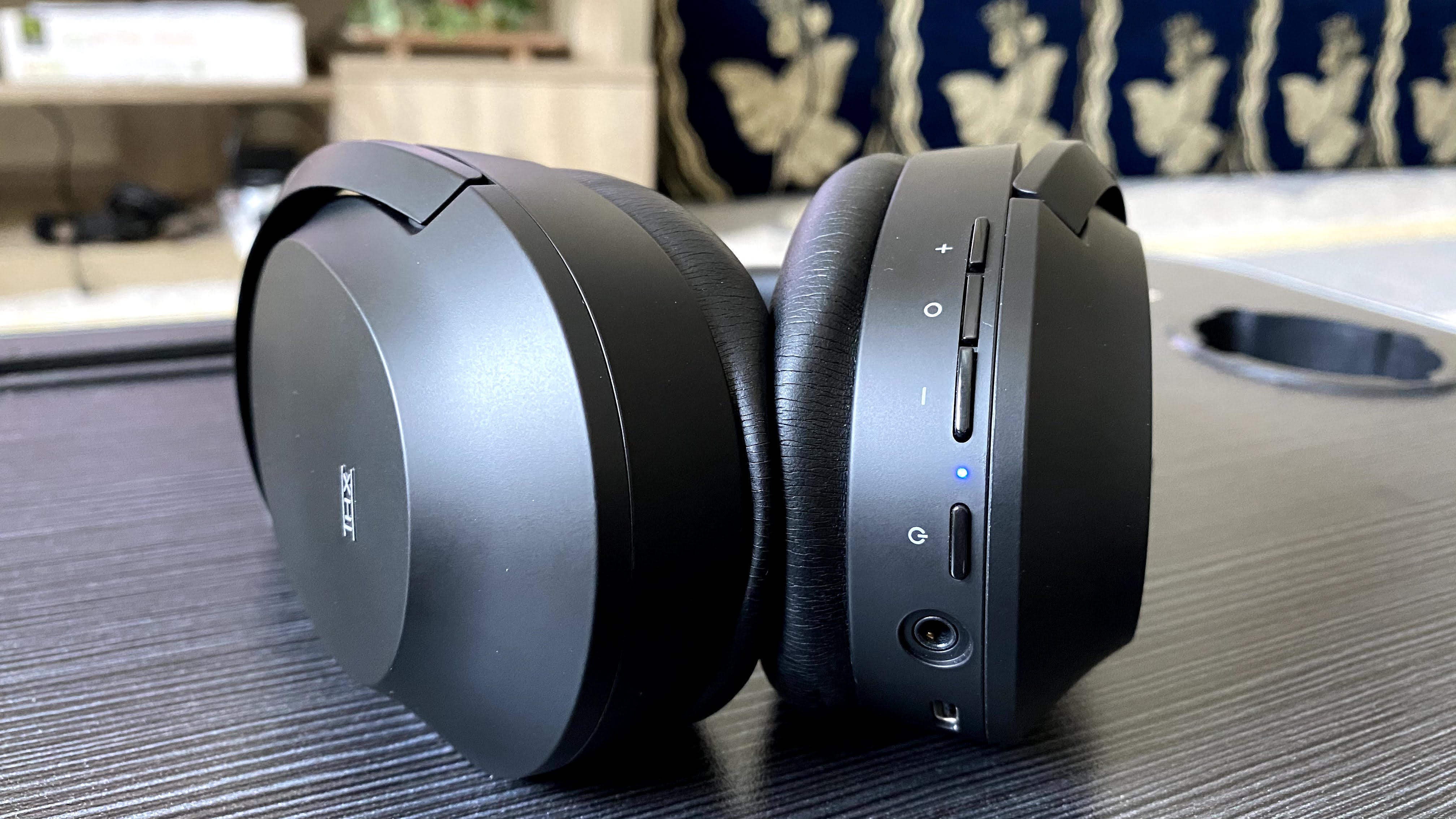
One of the most impressive features of the Razer Opus is how well the noise cancellation works. It uses the four microphones located on the outside of the headphones, which will intelligently cancel outside noises so you can focus on your podcast or music.
With ANC On and volume set to 50 percent, it was able to completely eliminate most of the loud noises we encountered in our daily lives. Be it a TV blaring in the living room or the hustle and bustle of a crowded gym, the Razer Opus was able to provide complete isolation and privacy to enjoy our music of choice. The leather paddings on the ear cups also ensures minimal leak so you can wear them without fear of sharing your playlist with anyone. ‘Waka Waka’ is still a great track, alright?
The Ambient Mode is also a winner. It uses the microphones to not only let the outside noise in, but also amplify them so you can hear others better and more clearly. However, you’ll have to pause the music to carry a conversation properly as the Opus doesn’t lower the volume automatically. Here's hoping that an automatic volume control feature is implemented in future releases.
But, of course, none of that matters if the headphones don't sound good. Luckily, Razer has worked to bring THX certification to these headphones – and it's paid off for the most part.
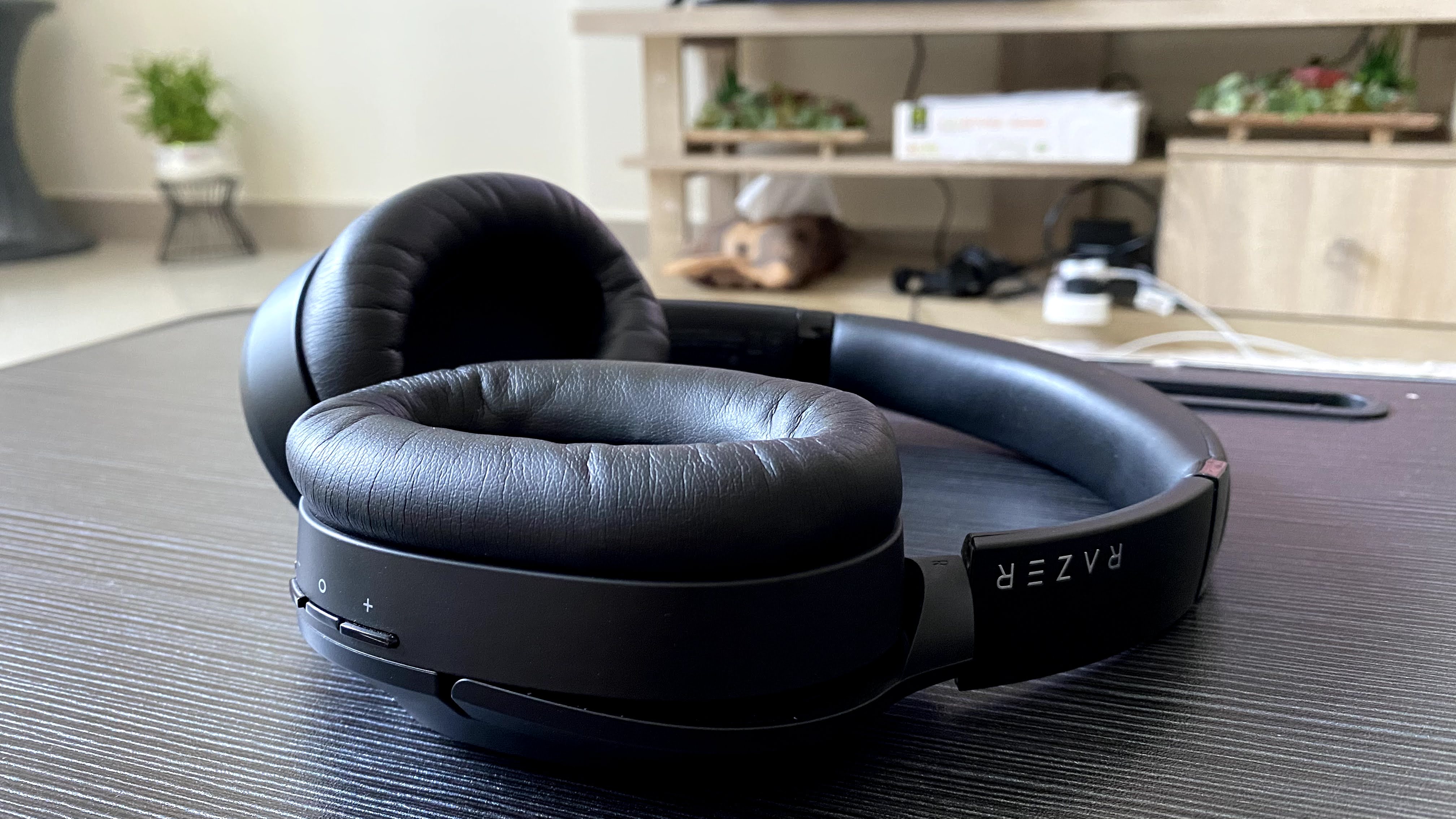
The Razer Opus offers a flat and balanced sound signature - one of the mandates to earn the THX certification. This means that unless you prefer a flat response from your headphones, you might find them a bit boring, especially when compared to other headphones in its category that may have been specially tuned for music listening.
One should note that Razer owns THX, which puts their THX-Certification on their products in murky waters. The company claims there is no bias involved in earning the certification and they worked on meeting the requirements just like any other company would.
If you are unhappy with how the Opus sounds, you can download an app on your iOS and Android device to alter the quality. You can pick between a number of presets, namely THX, Amplified, Vocal, Enhanced Bass and Enhanced Clarity. Unfortunately, there doesn’t seem to be a way to set a custom preset which is a strange omission to make. The feature might come at a later date but who knows when that would happen.
For us, the Amplified preset worked best for all kinds of entertainment. It offers a bit more excitement to the sound that really brings out the best from the 40mm drivers. The Opus is able to deliver full-bodied mids, as well as well-rounded highs so they won’t strain your ears after a while. The good mids performance also means the headphones are great for movies too, as vocals come in clearly without being muddied by the other frequencies.
Our only complaint with the sound is that the bass is a bit too strained and artificial for our tastes. The headphones have a good low-end pump but it somehow feels off-key and not as airy and smooth as it should be. This is quite clear in bass heavy tracks where it feels the headphones are slightly struggling to keep up. This isn’t a deal breaker by any means, and once you kind of get used to its sound, the issue fades away unnoticed.
In terms of soundstage, it is small and compact but the drivers are capable of adding some room to the arrangements. Each note and instrument are easy to distinguish, and there is enough volume and clarity for a pleasant music listening experience.
The Razer Opus can also auto-pause/auto-play to whatever you are listening to on your device. Simply pull the headphones away from your head, and the audio will pause automatically - put them back on and it will auto-resume. It’s a wonderful feature and works extremely well, too. It has never glitched out and has worked a hundred percent of the times we tried.
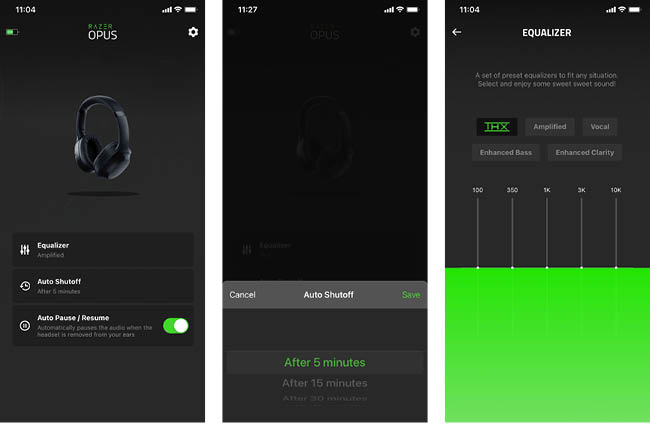
There's also an app that you can download for either your iOS or Android device that will let you alter the soundstage of the headphones, but you can't go in and manually tinker with the sound settings – only pick between a number of presets. We were told that this functionality might come at a later date, but who knows when that would happen.
The only real issue here is that they don't get quite as loud as the Bose QC35 II that we're used to. But, again, that's a headset that costs significantly more – and doesn't have some of the cooler features.
Still, the Razer Opus may end up becoming our daily driver thanks to one feature: auto-pause/auto-play. Being able to just pull our headphones down around our neck and not have to worry about having to pause what we're listening to is such an amazing feature – and it works so well. It's a quality of life feature that we'd be hard-pressed to give up, even if it means we have to live with headphones that aren't quite as loud.
The headphones can also be used to take calls, but the microphones do not do a great job in catching your voice clearly. We sounded muffled and distant and, and while the other person could understand us, it was barely ideal to hold a proper conversation. This is a problem we faced with the Hammerhead True Wireless Pro as well, and it’s an area that Razer needs to work on for future releases.
Then there's the battery life, which deserves all the praise in the world. Razer claims that this headset has up to 25 hours of battery life, and while we couldn't measure that down to the minute, we totally believe it. We've had this headset for about two weeks, and haven't had to charge it once, and that's with taking an hour-long walk each night with the headphones on.
This is largely thanks to that auto-pause functionality, which will also, you know, turn the headset off when you're not using it – imagine that. Especially if you're not using this headset 24/7, you're only going to have to charge it maybe once a week with heavy use. Whenever we need the Razer Opus, it's there with enough juice to get us where we're going.
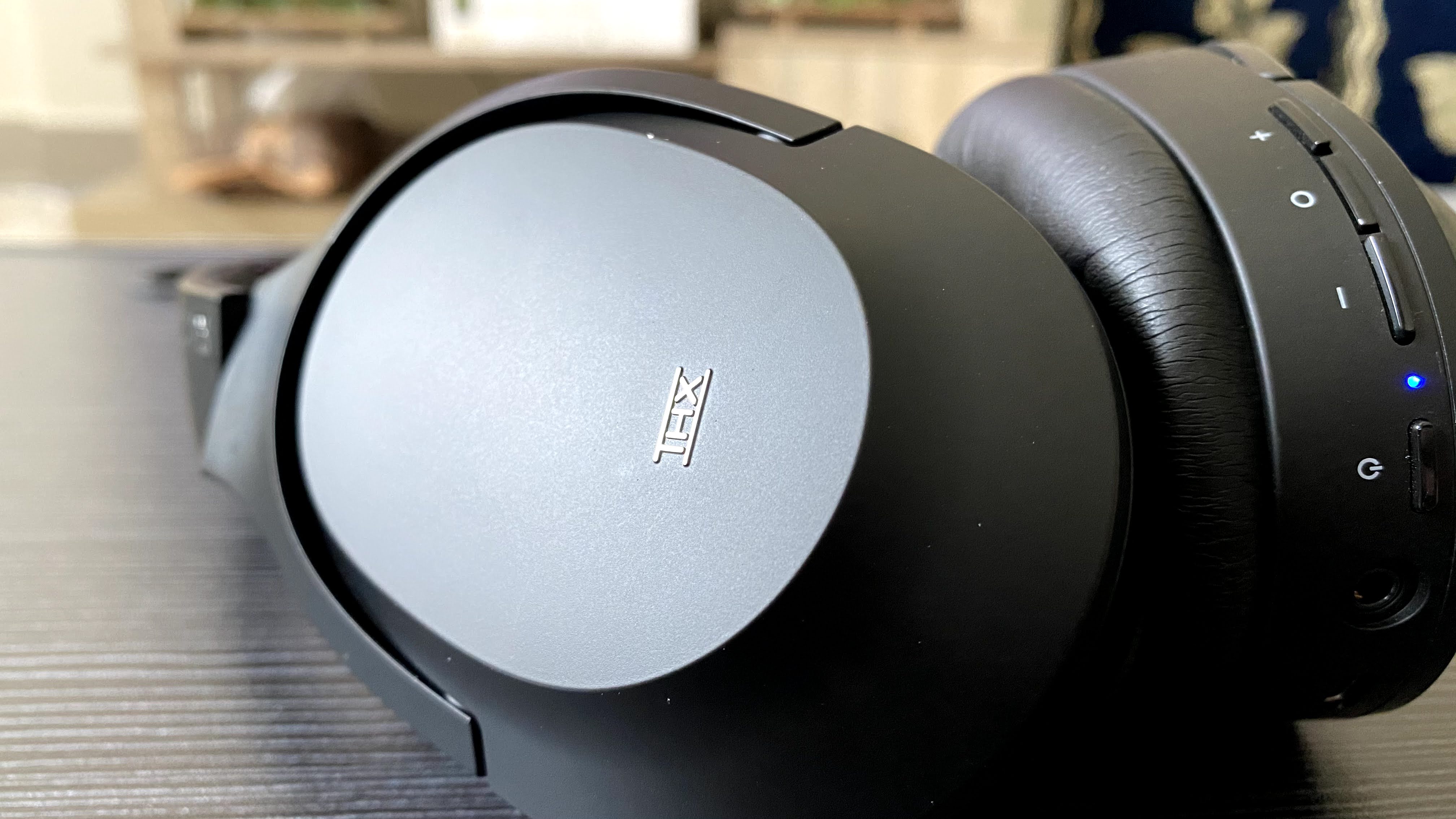
Buy it if...
You need affordable ANC headphones
ANC headphones are typically a bit on the pricey end, but at $199 (£199, AU$330), the Razer Opus is very affordable.
You have small ears
The ear cups on the Razer Opus definitely aren't the biggest in the world, but if you find that other headphones have too much room, these might give you a snug fit.
You watch a lot of movies on the go
Because of the partnership with THX, movies and TV shows really shine on the Razer Opus, with crystal-clear audio.
Don't buy it if...
You want flawless bass performance
While the Razer Opus is capable of producing a good amount of bass, it is not as refined as you would have liked.
You have big ears
If you have large ears like we do, the smaller ear cups might be a bit uncomfortable. Definitely not the end of the world, but if you like your ears to breathe free, it's something to be aware of.
- Looking for more options? Don't miss our round-up of the best noise-cancelling headphones
0 comments:
Post a Comment